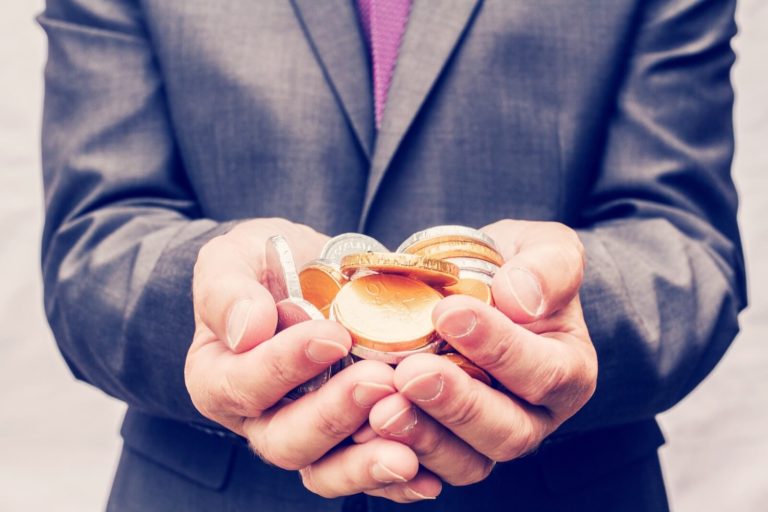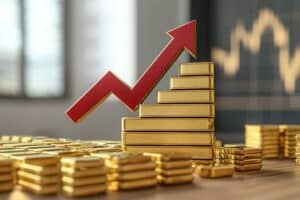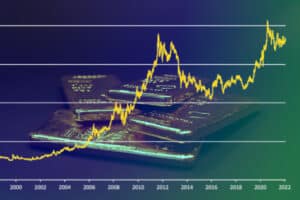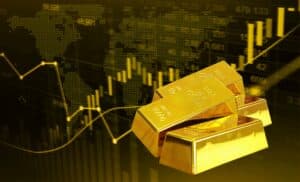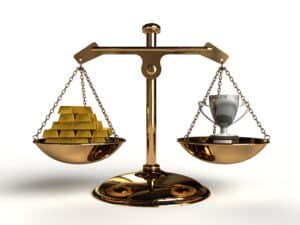Precious metals are becoming an increasingly popular investment vehicle as more people lose confidence in paper investments. The main appeal of physical precious metals is that because they’re tangible assets you hold and store, their value tends to rise during economic distress.
Entering the world of precious metals investing can feel daunting. Every precious metal has unique properties, and some make better investments than others. To make matters even more complicated, you can buy precious metals in various forms; this breadth of options can leave you unsure of the best choice.
Read on to learn about the most popular precious metals to invest in and their benefits and drawbacks so you can decide which metals best suit you and your financial goals.
What Are Precious Metals?
Technically, precious metals are naturally-occurring metallic compounds with economic value. Most precious metals are stable and unreactive. They don’t oxidize or degrade under ordinary conditions and remain in pristine condition as long as they receive proper storage and care.
Precious metals are especially appealing to investors because they provide much-needed diversification for investment portfolios. Typically, weak economies drive people to more tangible commodities such as gold, leading to an increase in value for most precious metals. Similarly, as the economy strengthens, people have more buying power, and the price of gold and other precious metals will decline.
This inverse relationship between precious metals and paper markets provides an excellent opportunity to maintain a portfolio’s value and return, regardless of economic circumstances.
Many precious metals have also started playing an important role in various industrial processes, especially electronics. This expanded role means that many precious metals will continue to gain value in more positive markets as the increased demand from industries will result in a subsequent price increase.
Ways To Invest in Precious Metals
Many beginner investors feel surprised by the numerous options for investing in precious metals. While buying physical bullion remains the go-to option for most investors, paper investments offer unique benefits that may appeal more to other investors.
Understanding the variety of investment options will ensure that you choose the best precious materials in which to invest for your goals.
Physical Bullion
Physical bullion refers to any physical form of precious metal. These forms can vary dramatically in weight, size, and convenience, making some an excellent choice as an investment vehicle, while others work better as protection from inflation and economic crisis.
One important factor to consider when buying physical bullion is the premium: the added price on top of the metal’s current value. All vendors will have a premium on their bullion, which will vary depending on the manufacturing process and the vendor’s profit margins. This makes it worthwhile to shop around and find out what investments have a premium that fits your budget.
Coins
Coins are rounded pieces of metal that are produced by various national mints. They are significantly lighter than bullion bars and are easier to store. If you aren’t interested in the history behind certain coins, you can opt to buy rounds, which are similar to coins but don’t have any face value and are not legal tender.
The value of rounds stems exclusively from their weight and purity, which most mints will stamp into the round for easy valuation.
Bars
Gold bullion bars are particularly popular with investors due to their ease of storage and value density. Bullion bars come in a wide range of weights and sizes, ranging from one-gram bars up to 100-kilogram bars. Interestingly, most precious metals markets deal in imperial units rather than metric ones, and most exchanges will indicate their current prices per troy ounce of the metal.
It’s vital to remember that the troy ounce, at 31.1034768 grams, is not the same as the ounce you use while weighing vegetables (at 28.349 grams) — the troy ounce is slightly heavier and thus more valuable than a standard ounce.
Investment-Grade Rare Coins
Investment-grade, or numismatic, coins are unique or rare coins that have more value as collectors’ items than their precious metal price. Factors such as age, rarity, and history can dramatically change the value of a particular coin, and numismatic coins often have a much higher value than bullion coins.
Numismatic silver or gold coins can become an exciting and potentially profitable hobby. Still, the long-term nature of the investment and the fact that the IRS doesn’t accept numismatic coins as part of a self-directed IRA means that they won’t be your primary precious metals investment vehicle.
IRA
Individual retirement accounts (IRAs) offer a tax-advantaged method of saving up for retirement. One type of IRA, the self-directed IRA, allows individuals to invest in physical commodities instead of funds or securities. A gold IRA is an excellent way of diversifying your retirement portfolio, though it does mean adhering to IRS standards regarding buying, selling, and storing your precious metals.
Paper
Investing in precious metals doesn’t have to involve buying physical goods and dealing with the hassle of transporting and storing them. Precious metals-related paper investments still reflect the value of physical gold but offer greater convenience and flexibility, allowing for more active trading.
Exchange-Traded Funds
Exchange-traded funds, or ETFs, contain assets such as gold and precious metals within the fund. When you buy into an ETF, you buy into those underlying assets without dealing with the disadvantages of transporting and storing physical goods. ETFs are very similar to mutual funds in how they function. The main difference between the two is that ETFs are tradable on an exchange.
Futures Contracts
Futures contracts are relatively risky investments when compared to ETFs or mutual funds. In a futures contract, two parties agree to trade an agreed-upon amount of a commodity at a certain price on a certain date. The seller must sell the commodity at that price on the date, and the buyer must complete the transaction.
Futures contracts rely heavily on predicting trends. The buyer benefits as the commodity price rises because they’ve locked in a lower price. Similarly, if the price drops, the seller benefits by being able to sell their commodity for more money than its current worth.
Mutual Funds
Mutual funds are pooled resources from multiple investors that track certain indexes, such as precious metals. Each fund has a manager that buys and sells resources accordingly to meet the fund’s goals, and investors receive capital gains distributions based on the fund’s activity.
Mutual funds are typically more expensive than ETFs but offer a more active option to take advantage of rapid market shifts.
Stocks
Buying shares in precious metals mining companies is a way of taking advantage of the increasing demand for these commodities. However, investing in shares requires a deep understanding of the stock market and how it values mining companies. Stock trading is best suited for an experienced investor.
The “Big Four” Best Precious Metals in Which To Invest
While most people are familiar with gold and silver, precious metals also include platinum, palladium, copper, iridium, rhodium, lithium, and osmium. However, it’s best to focus on the “big four” when starting, as they offer relatively predictable growth and have a lower barrier to entry than their rarer counterparts.
Gold
Gold has an extensive history as a valuable metal and remains a popular investment vehicle for precious metals investors. Due to its rarity and corrosion resistance, gold maintains its value exceptionally well, even in times of economic crisis. Gold IRAs are a popular way of diversifying retirement accounts, and the sheer number of options makes gold an excellent first choice for most investors.
The main advantage of gold is that it’s value-dense — a 10-ounce gold bar costs around $18,000, making it the perfect way to store large amounts of money in a small space. Its corrosion resistance also means that your bullion won’t lose value over time, and your bars will require minimal care while in storage.
Silver
Silver is significantly easier to mine than gold and is a common by-product of other mining processes. Its relative abundance makes it much cheaper than gold, but growing industrial demand ensures that its value continues to rise predictably.
Silver is a popular entry-level precious metal because it has a relatively low barrier of entry. A 10-ounce bar will cost around $200, and in the event of an economic crisis, silver will likely be more valuable than gold during day-to-day transactions.
The IRS allows silver bullion to form part of a self-directed Silver IRA, allowing buyers to enjoy the benefits of a tax-advantaged account while also benefiting from having a physical silver store.
Platinum
Platinum is incredibly durable, corrosion-resistant, and dense. Its almost pure white color and durability made the metal popular among jewelers, while its density and rarity make it an excellent investment option.
Almost 50% of the world’s platinum production supplies the automotive industry, while the rest goes to jewelers and electronics manufacturers. Compared to gold and silver, mints produce very few platinum bars and coins, and their relatively high price makes them a better option for more experienced investors.
Palladium
Palladium was formerly a little-known metal, with its predominant usage in jewelry. The price of palladium and platinum increased significantly during the 20th century due to their role in the catalytic conversion process in automobiles. As palladium and platinum compete for demand in the automotive industry, their value fluctuates depending on economic conditions and global events.
Currently, palladium is more expensive than gold, and its crucial role in the automotive industry should ensure that the price remains stable. However, palladium is not as beginner-friendly as gold or silver due to its volatility and complex dependencies on other markets.
Pros and Cons of Investing in Precious Metals
As with any investment, buying precious metals requires careful consideration of their benefits and drawbacks. Each investor’s portfolio is unique, and while investing in precious metals may be the right move for some, others find that the disadvantages outweigh any benefits.
Pros of Precious Metal Investing
- Portfolio diversification: While many precious metals have industrial uses, their intrinsic value ensures they remain inversely related to economic markets. Negative economic conditions drive investors to invest in stable, secure materials such as gold, driving up its value. Investors will start selling it off when the economy stabilizes in favor of growing stock prices. This selloff lowers precious metal prices.
- Stability: While some precious metals undergo significant changes in daily values, they have a relatively stable upward trend overall. As precious metals have a finite supply, increasing demand will result in a continuation of this increased value.
- Lower credit risk: Most stable, low-risk investments depend on an organization or government succeeding. If it fails, you can lose your entire investment. Precious metals are physical commodities whose value remains independent of governments or companies succeeding or failing.
Cons of Precious Metal Investing
- Lack of liquidity: Physical commodities may be difficult to sell, especially if you’ve invested in larger, more valuable bars. Considering to what degree you value liquidity when it comes to your bullion purchasing decisions is vital.
- Slow growth: Stability may be good for long-term growth, but precious metals lack the potentially significant short-term returns associated with mutual funds and the stock market.
- A large premium for physical goods: In addition to paying a processing premium for minted gold coins and bars, you also have to pay ongoing storage fees for as long as you invest in physical goods.
Start Investing In Precious Metals Today!
Investing in precious metals can be an excellent way to expand your portfolio and diversify your assets. However, knowing which precious metals to invest in is vital in making the right decisions for your goals and circumstances.
Whether you’re getting ready to buy your first gold bar or you’ve been investing in precious metals for years, at Noble Gold Investments, we make the process fast, easy, and worry-free. Our agents are standing by to answer any questions you may have about our Gold & Silver IRAs, our bullion products, investing in precious metals, or anything else you may need help with to get you started on your investment journey.
Call Noble Gold Investments at (877) 646-5347 today for more information.


